Exercise 6.4-Additional Questions - Chapter 6 - Two Dimensional Analytical Geometry - 11th Maths Guide Samacheer Kalvi Solutions
Updated On 26-08-2025 By Lithanya
You can Download the Exercise 6.4-Additional Questions - Chapter 6 - Two Dimensional Analytical Geometry - 11th Maths Guide Samacheer Kalvi Solutions with expert answers for all chapters. Perfect for Tamil & English Medium students to revise the syllabus and score more marks in board exams. Download and share it with your friends
Share this to Friend on WhatsApp
Additional Questions Solved
Question 1.
Find the angle between the pair of straight lines given by $\left(a^2-3 b^2\right) x^2+8 a b x y+\left(b^2-3 a^2\right) y^2=0$.
Solution:
Angle between the lines $a x^2+2 h x y+h y^2=0$ is given by $\tan \theta=\frac{ \pm 2 \sqrt{h^2-a b}}{a+b}$
In this problem, $\tan \theta=\frac{ \pm 2 \sqrt{16 a^2 b^2-\left(a^2-3 b^2\right)\left(b^2-3 a^2\right)}}{a^2-3 b^2+b^2-3 a^2}$
$=\frac{ \pm 2 \sqrt{16 a^2 b^2-a^2 b^2+3 b^4+3 a^4-9 a^2 b^2}}{-2 a^2-2 b^2}$
$=\frac{ \pm 2 \sqrt{3 a^4+3 b^4+6 a^2 b^2}}{-2\left(a^2+b^2\right)}= \pm \sqrt{3}$
$\tan \theta=60^{\circ}$ [If we take the acute angle]
Question 2.
Show that $9 x^2+24 x y+16 y^2+21 x+28 y+6=0$ represents a pair of parallel straight lines and find the distance between them.
Solution:
$
9 x^2+24 x y+16 y^2+21 x+28 y+6=0
$
Here $\mathrm{a}=9.6$
$
\begin{aligned}
& \mathrm{b}=16 \\
& \mathrm{~g}=\frac{21}{2} \\
& \mathrm{f}=14 \\
& \mathrm{c}=6 \\
& \mathrm{~h}=12 \\
& \mathrm{~h}^2-\mathrm{ab}=(12)^2-9(16)=144-144=0
\end{aligned}
$
$\therefore$ The lines are parallel.
$
9 \mathrm{x}^2+24 \mathrm{xy}+16 \mathrm{y}^2=(3 \mathrm{x}+4 \mathrm{y})(3 \mathrm{x}+4 \mathrm{y})
$
Let $9 x^2+24 x y+16 y^2+21 x+28 y+6=(3 x+4 y+1)(3 x+4 y+m)$
Equating the coefficients of $x$ and constant term
$
\begin{aligned}
& 31+3 \mathrm{~m}=21 \\
& 1 \mathrm{~m}=6
\end{aligned}
$
Solving we get, $1=1$ or 6
$
m=6 \text { or } 1
$
$\therefore$ The separate equations are $3 x+4 y+1=0$ and $3 x+4 y+6=0$
The distance between the parallel lines are $\left|\frac{6-1}{\sqrt{9+16}}\right|=\frac{5}{5}=1$ unit.
Question 3.
If the equation $12 x^2-10 x y+2 y^2+14 x-5 y+c=0$ represents a pair of straight lines, find the value of c. Find the separate equations of the straight lines and also the angle between them.
Solution:
$
\begin{aligned}
& 12 x^2-10 x y-2 y^2+14 x-5 y+c=0 \\
& a x^2+2 h x y+b y^2+2 g x+2 f y-c=0
\end{aligned}
$
Here $\mathrm{a}=12$,
$
\begin{aligned}
& \mathrm{b}=2 \\
& \mathrm{~g}=7 \\
& \mathrm{f}=5 / 2 \\
& \mathrm{c}=\mathrm{c} \\
& \mathrm{h}=-5 \\
& \mathrm{af}^2+\mathrm{bg}^2+\mathrm{ch}^2-2 \mathrm{fgh}-\mathrm{abc}=0 \text { is the condition } \\
& 12\left(\frac{25}{4}\right)+2(7)^2+c(-5)^2-2\left(\frac{-5}{2}\right)(7)(-5)-12(2)(c)=0 \\
& 75+98+25 c-175-24 c=0, c=2
\end{aligned}
$
The equation is $12 \mathrm{x}^2-10 \mathrm{y}+2 \mathrm{y}^2+14 \mathrm{x}-5 \mathrm{y}+2=0$
$
12 x^2-10 x y+2 y=(3 x-y)(4 x-2 y)
$
Let $12 x^2-10 y+2 y^2+14 x-5 y+2(3 x-y+1)(4 x-2 y+m)$
So that $41+3 \mathrm{~m}=14,-21-\mathrm{m}=-5$
On solving we get $l=\frac{1}{2}, m=4$
$\therefore$ The separate equations are $3 x-y+\frac{1}{2}=0 \Rightarrow 6 x-2 y+1=0$ and
$
\begin{aligned}
& 4 x-2 y+4=0 \Rightarrow 2 x-y+2=0 \\
& m_1=\frac{-6}{-2}=3 ; m_2=\frac{-2}{-1}=2 \\
& \therefore \tan \theta=\left|\frac{m_1-m_2}{1+m_1 m_2}\right|=\left|\frac{3-2}{1+3.2}\right|=\frac{1}{7} \\
& \theta=\tan ^{-1}\left(\frac{1}{7}\right)
\end{aligned}
$
Question 4.
For what value of $\mathrm{k}$ does $12 \mathrm{x}^2+7 \mathrm{xy}+\mathrm{ky}^2+13 \mathrm{x}-\mathrm{y}+3=0$ represents a pair of straight lines? Also write the separate equations.
Solution:
$
\begin{aligned}
& 12 x^2+7 x y+k y^2+13 x-y+3=0 \\
& \mathrm{a}=12 \text {, } \\
& \mathrm{h}=\frac{7}{2} \\
&
\end{aligned}
$
$
\begin{aligned}
& \mathrm{f}=-\frac{1}{2} \\
& \mathrm{c}=3 \\
& \mathrm{af}^2+\mathrm{bg}^2+\mathrm{ch}^2-\mathrm{abc}-2 \mathrm{fgh}=0 \\
& 12\left(-\frac{1}{2}\right)^2+k\left(\frac{13}{2}\right)^2+3\left(\frac{7}{2}\right)^2-12(k)(3)-2\left(-\frac{1}{2}\right)\left(\frac{13}{2}\right)\left(\frac{7}{2}\right)=0 \\
& \frac{12}{4}+\frac{169 k}{4}+\frac{147}{4}-36 k+\frac{91}{4}=0 \\
& \Rightarrow 12+169 \mathrm{k}+147-144 \mathrm{k}+91=0 \\
& 25 \mathrm{k}=-250 \Rightarrow \mathrm{k}=-10
\end{aligned}
$
The equation is $12 x^2+7 x y-10 y^2+13 x-y+3=0$
To find separate equations: $12 \mathrm{x}^2+7 \mathrm{xy}-10 \mathrm{y}^2=(3 \mathrm{x}-2 \mathrm{y})(4 \mathrm{x}+5 \mathrm{y})$
Let $12 x^2+7 x y-10 y^2+13 x-y+3=0(3 x-2 y+1)(4 x+5 y+m)$
Equating the coefficient of $\mathrm{x} \Rightarrow 41+3 \mathrm{~m}=13$
Equating the coefficient of $\mathrm{y} \Rightarrow 51-2 \mathrm{~m}=-1$
(1) $\times 2 \Rightarrow 81+6 \mathrm{~m}=26$
(2) $\times 3 \Rightarrow 151-6 \mathrm{~m}=-3$
$231=23 \Rightarrow 1=1$
$4+3 \mathrm{~m}=13$
$
3 \mathrm{~m}=9 \Rightarrow \mathrm{m}=3
$
The separate equations are $3 x-2 y+1=0$ and $4 x+5 y+3=0$
Question 5.
Show that $3 x^2+10 x y+8 y^2+14 x+22 y+15=0$ represents a pair of straight lines and the angle between them is $\tan ^{-1}\left(\frac{2}{11}\right)$
Solution:
$
\begin{aligned}
& 3 x^2+10 x y+8 y^2+14 x+22 y+15=0 \\
& a=3 \\
& A=5 \\
& b=8 \\
& g=7 \\
& f=11 \\
& c=15
\end{aligned}
$
The condition is $a f^2+\mathrm{bg}^2+\mathrm{ch}^2-\mathrm{abc}-2 \mathrm{fgh}=0$
$
3(11)^2+8(7)^2+15(5)^2-(3)(8)(15)-2(11)(7)(5)=363+392+375-360-770=0
$
The angle between the pair of straight line is given by
$
\begin{aligned}
& \tan \theta=\frac{ \pm 2 \sqrt{h^2-a b}}{a+b}=\frac{ \pm 2 \sqrt{25-3(8)}}{3+8}= \pm \frac{2}{11} \\
& \tan \theta=\frac{2}{11} \Rightarrow \theta=\tan ^{-1}\left(\frac{2}{11}\right)
\end{aligned}
$




